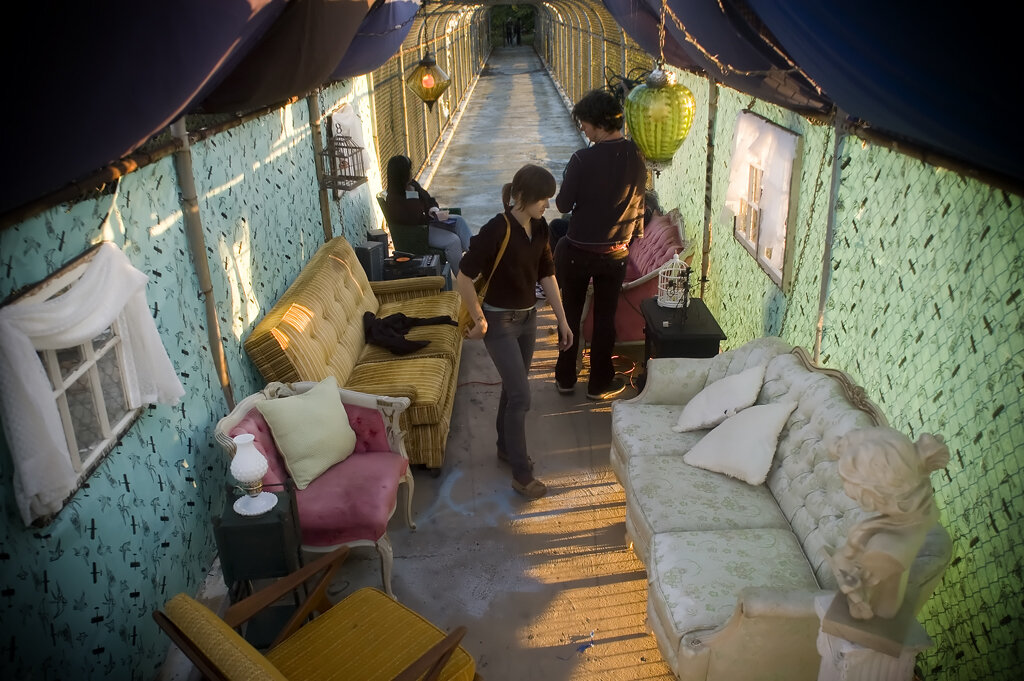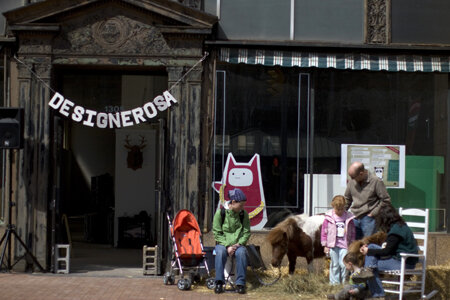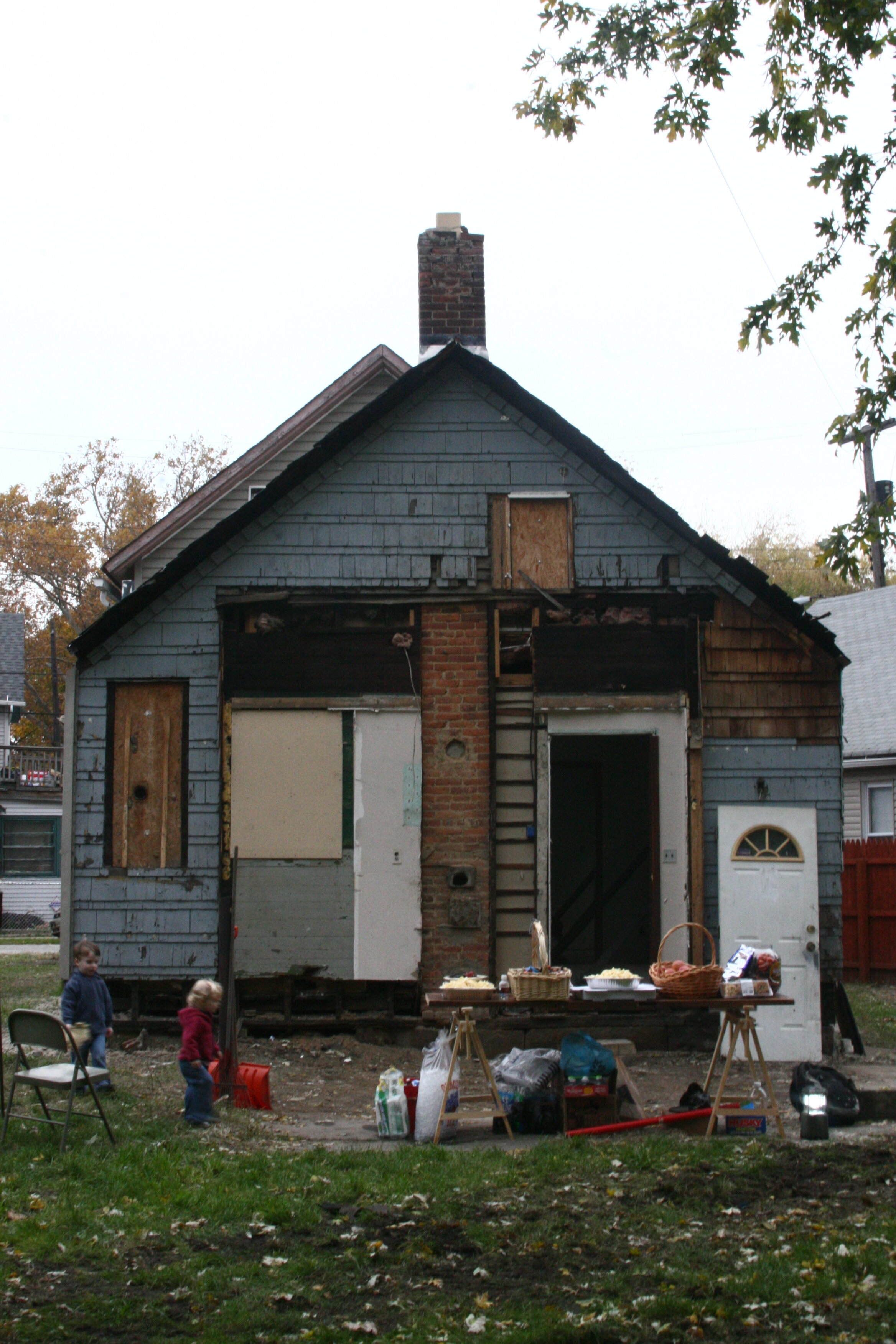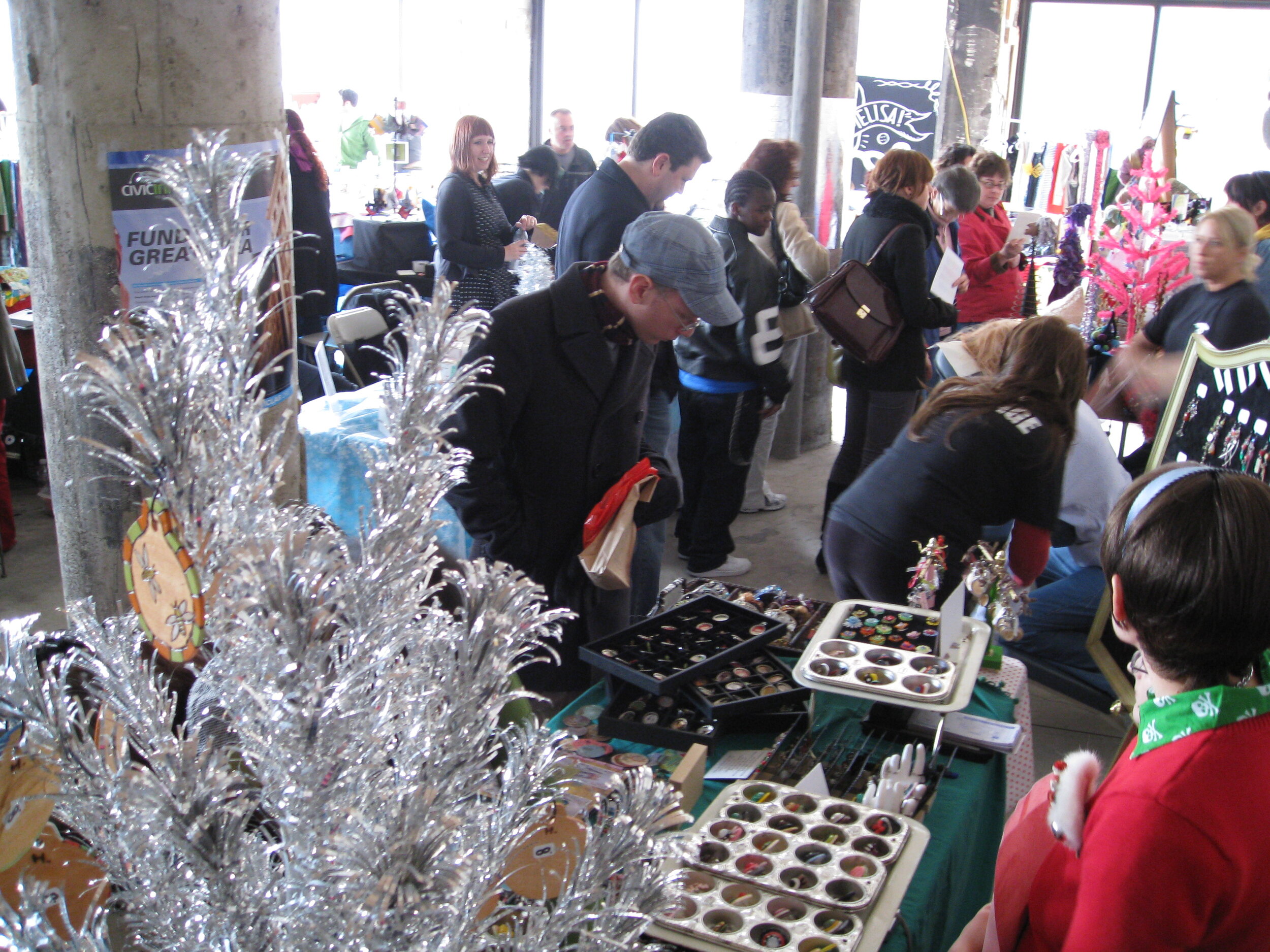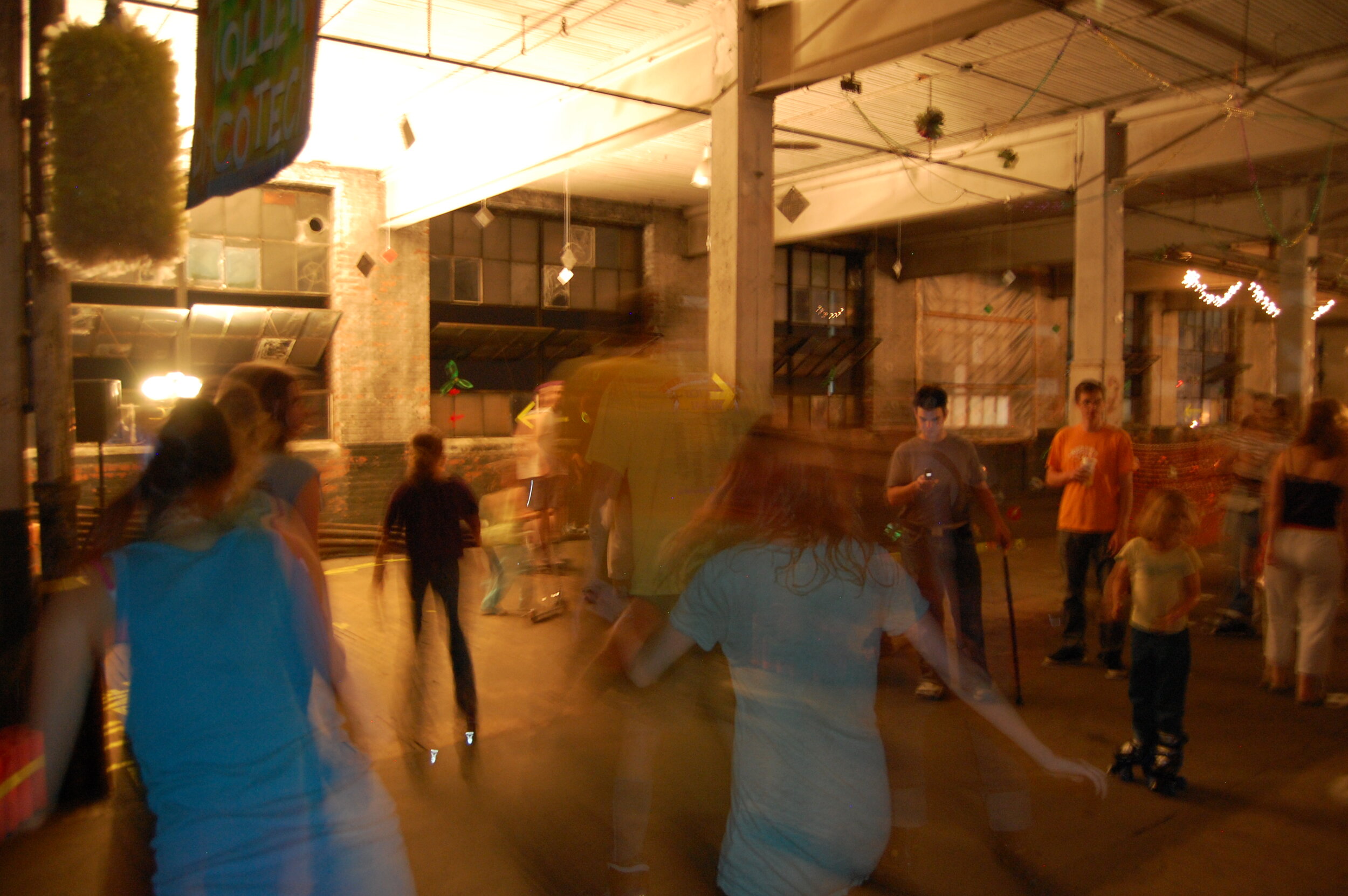Established by the CUDC in 2007, Pop Up City is an action-based research program that explores ideas for urban reinvention through temporary interventions. This research contributes to an understanding of the challenges of shrinking cities, an area of growing social importance since an increasing number of cities worldwide are grappling with population decline.
Temporary uses are undervalued in an urban context. Public officials prefer permanent projects that create an appearance of stability and progress. But short-term interventions are a useful tool in shrinking cities, where unpredictable conditions are best addressed with improvised, adaptable responses.
Pop Up City has evolved over the years to respond to the changing needs found in underused urban environments. Projects range in duration from a few hours to several weeks and vary in scale from a single storefront to multiple city blocks. Each Pop Up City project aims to explore different questions and share new lessons regarding temporary use as an urban activation strategy.
Project Partners
Organizational and individual collaborators include:
Latent Design | Toi Studio | Brite Winter | Ingenuity Cleveland
Pop Up City projects have been generously supported by:
Civic Innovation Lab and Creative Fusion at the Cleveland Foundation, the National Endowment for the Arts, the Ohio Arts Council, and Cuyahoga Arts & Culture
POP UP PROJECTS
Research Questions
Pop Up City research questions have been integrated into the CUDC's professional practice and Kent State University's graduate architecture curriculum. How can temporary interventions enhance urban vitality, engage the public in urban design decisions, and support permanent development? Temporary projects are used to test this question and identify community benefits, including:
FLUIDITY IN RESPONSE TO UNCERTAINTY: Where permanent development is infeasible, short-term interventions offer alternative versions and visions of the city. Pop Up City examines and accelerates the process of reinvention through targeted interventions in response to specific community concerns.
SOCIAL CAPITAL: Temporary projects create portable places of inclusion. Traditional real estate development targets a desirable market niche, excluding those who don’t fit the picture of ideal consumers. Pop Up City provides opportunities and amenities for all, fostering social interaction and engaging residents in intentional and measurable ways.
ENGAGEMENT: Temporary projects provide an effective means of community engagement. Instead of asking the public to respond to sketches and models of development alternatives, temporary installations enable people to explore a variety of alternatives and determine their preferences based on actual, on-site experiences.
A PATH FORWARD: Short-term opportunities can lead to permanent change. Pop Up projects showcased vacant commercial properties that subsequently resulted in permanent tenants. A temporary project for a vacant covered bridge in Cleveland led to a full-blown transportation planning process for the permanent re-use of the structure, funded by the Ohio Department of Transportation and the National Endowment for the Arts. A Pop Up streetscape project helped to illustrate a recently adopted Complete Streets ordinance and was used to train the city’s Public Works staff in the principles of sustainable street design.
ReLATED PRESS
The profesional practice, research, and pedagogical contributions of the Pop Up City initiative have received numerous forms of recognition, which include the following:
Sep 2013 | The Detroit-Superior Bridge Project selected as a Finalist in SXSW Eco's Place by Design Competition
Aug 2013 | Blah Blah Blob! project wins Chicago's Activate Union Station Competition
Jul 2013 | Pop Up City on display at the SPONTANEOUS INTERVENTIONS exhibit at the Chicago Cultural Center
Sep 2012 | The Hipp Deck project published in the book Doing It Differently by Kylie Legge
Aug 2012 | Pop Up City included in the U.S. exhibit at the 2012 Venice Biennale of Architecture
Sep 2009 | "Happening Places" article in Cleveland Magazine on Pop Up City's early projects


